Iowa Battleships: A 80-Long Threat
In the autumn of 1991, in a conversation with US Secretary of Defense R. Cheney, the Sultan of Oman expressed his willingness to pay the costs of maintaining two Iowa class battleships to ensure their continuous combat patrols in the Persian Gulf for nine months a year.
“Of all your fleet only battleships are like real weapon"- added Sultan Qaboos bin Said.
In my opinion, the best compliment for floating fortresses created from an alloy of steel and fire.
The actions of the battleships impressed the Eastern ruler more than all the missile cruisers and aircraft carriers combined. But wait for a laugh. Sultan Qaboos was not a backward savage, understanding nothing about modern weapons. He did not appreciate the shine of polished guns, but the combat stability of the “Iow”. At the same time, the powerful rocket-gun armament of the battleships was also of importance for the coastal states of the Persian region. According to the density of the fire impact, the battleship fire was equivalent to the wings of two aircraft carriers.
Unlike the stark frigate and similar tin cans, the Iowa could withstand the attack with the use of any means in service with Iraq and Iran. She was well suited for patrolling in the zone of unpredictable danger, where it is unknown who and why it was unclear why at any moment shelling at a passing ship.
An unstoppable and indestructible battle platform, like a sword of Damocles hanging over the restless waters of the bay, which could make the local lovers look around nervously for saber-rattling.
The only thing that Sultan Qabus did not take into account was the cost of maintaining unique warships. They were significantly higher than the X-NUMX-meter royal yacht Al-Said.
The effectiveness of the battleship "Iowa" in modern conditions
The only type of highly protected ships who were fortunate enough to undergo modernization and serve until the middle of the 1990-s.
At the same time, of all the projects of heavy cruisers and battleships of their era, “Iowa” was the least suited for service in modern conditions. Such is the irony of fate.
Battleships of this type had an internal armor belt, which simplified the process of their design and construction. The armor plates inside were not required to repeat the smooth hull lines, so they had the appearance of conventional coarse metal structures. In addition, reducing the width of the citadel saved thousands of tons of displacement, which were used to improve the speed and enhance the composition of the battleship’s weapons.
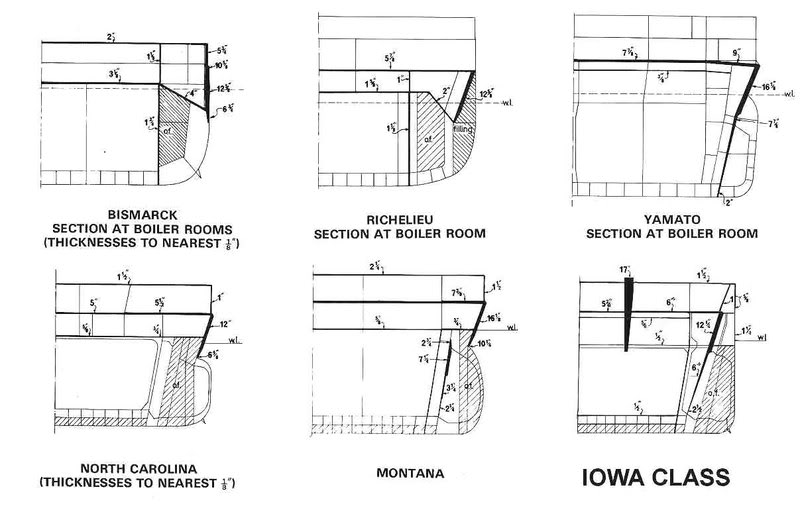
As for security, the internal location of the belt did not affect the results of hits of large-caliber armor-piercing shells. Incredibly thick by today's standards, the skin (from 16 to 37 mm) was too thin to “tear off” the Makarov armor-piercing tip even on 15-inch ammunition.
Decades have passed. The era has changed.
By the time of the last reactivation of the battleships, high-explosive or semi-submarine (high-explosive with a deceleration of the fuse) missile warheads became the main means of destruction at sea. In such conditions, the inner belt began to create unnecessary problems and increased the vulnerability of “Iowa”. Without a doubt, her 30-centimeter “shell” could protect all important compartments and combat posts from the RCC explosion. But before that, a rocket stuck into the side could “turn” a soft covering in an area of tens of square meters. meters
A minor problem in the scale of the battleship that does not affect the combat capabilities. However, it is still unpleasant.
Again, there is no mention here of the uselessness of the defense. Security “Iowa” was phenomenal: the battleship could withstand any hits, deadly for modern ships. And yet its layout and installation scheme of protection did not meet the requirements of the time. Ideally, armor elements should be placed outside, in the form of an outer skin of the board.
"Iowa" was created for fighting with the same floating fortresses, in which no one fired explosive bombs. If someone remembers the lessons of Tsushima and the terrible shells with shimoza, then there, for a number of reasons, there was a tragic situation. If the ship allows to shoot itself for long hours, then no defense will help it.
As for the American battleships of the WWII era, all the innovative approaches had quite an obvious result. After examining the advantages and disadvantages of the Iowach and South Dakota inner belts, the Americans returned to the traditional belt armor design for the next generation of battleships (Montana).
The inner belt is not the only problem that reduced the military stability of “Iowa”. A significant role was played by the unfortunate deployment of missile ammunition. The designers did their best to place Tomahawk cruise missiles among the 32 artillery towers.
The missiles were installed on the upper deck in protected installations MK.143, which had a mass of 26 tons (4 missiles in each) - the predecessors of the domestic Club-K complex (“Calibres”, secretly housed in containers).
The word “protected” should not be misleading: in the photo it is noticeable that the thickness of the MK.143 armored covers did not exceed 20-30 mm. Anti-splinter protection.
As for the anti-ship “Harpoons” (4X4), they generally stood openly on the truss guides, shining dimly with their plastic cases.
Ammunition - one of the most dangerous elements, requiring maximum security measures, suddenly found himself on the upper deck, without any protection. Such is the price of a “moderate” modernization of a ship of a past epoch, which they tried to bring to conformity with modern conditions.
Joint actions of the ships belonging to different epochs caused certain difficulties. Intake gas turbines could in a quarter of an hour get out of the “cold” state to the maximum power mode. Unlike modern warships, the “Iowam” needed much more time to breed vapors.
When the battleship went into the sea, it was worth to stay away from him. And this concerned not only opponents.
Unlike guided missile cruisers, the “Iowa” were created for violent artillery duels, in which speed and maneuver were all decided. The command of the Navy was forced to issue instructions reminding sailors that the external impression was wrong. The fat monster surpasses any modern ship in maneuverability. Even during the Second World War, it was noted that the tactical diameter of the circulation of "Iowa" (740 meters) was less than that of the destroyer of the type "Fletcher".
The speed qualities of the Iowa have always been controversial. In an effort to extend the life of mechanisms, the Yankees never brought the power plant to full capacity. The value achieved in practice (221 thousand hp - a solid result, 1,5 times more than the atomic “Orlan”) corresponded to 87% of the installed power of the battleship power unit. In the afterburner mode and with a quarter of a million “horses” on the propeller shafts, the “Iowa”, according to calculations, could develop up to 35 nodes.
The theory in this case is not far from the practice. The specific contours of the “bottle” form and too large, even by the standards of battleships, the length of the hull (270 meters) caused by the installation of the second tier of the GEM (at the same time, the power plant compartments themselves occupied 100 meters of length) high-speed battleship ”is not an empty sound.
In addition, the “Iowa” was the most dynamic of all the ships of its class. According to the Navy, the time it takes to build 15 to 27 knots for the formation of the battleships North Caroline and South Dakota was 19 minutes. “Iowa”, thanks to its higher power density, accelerated much faster than all its American, European and Japanese peers (from 15 to 27 knots. - 7 minutes).
The battleships were optimized for the requirements and tasks of their time and in modern conditions looked like an obvious anachronism.
Like all American battleships, the “Iowa” were deprived of the hydroacoustic station and anti-submarine weapons (the tasks of the PLO, traditionally, were assigned to the destroyers of the escort).
Despite the modernization, the air defense system remained at the level of the 1940s. All plans with the removal of one of the towers of the main caliber, with the installation in its place of fifty rocket mines and the Aegis radar remained a dream. It was cheaper to build a new battleship.
Designers cost half measures.
The presence of four "Falanx" and portable air defense systems "Stinger" poorly helped in the fight against modern means of air attack. The battleship did not have the opportunity to intercept the carriers or at least make it harder for them to attack. The tasks of air defense were entirely assigned to the missile cruisers and destroyers of the escort.
However, the overall result was in favor of the battleships.
The combination of combat qualities (combat stability, missile-artillery weapons and the status of large 1 rank ships) unattainable for modern ships made Iowa a decent upgrade and extension of its service life. At the same time, the service is not in the role of blockshive or floating gear. The brightest stars of the first magnitude, the battleships were chosen to be the flagships of battle groups.
50 years in the forefront - which ship in stories showed a similar result? Moreover, no one had any thought that this was a forced, “ostentatious” decision, proceeding from the impossibility of replacing the veteran with a new ship.
Like half a century ago, the battleships remained the center of combat stability of the compounds. The appearance of immortal warriors in one or another part of the world did not go unnoticed in diplomatic and military circles. Everyone understood that in the event of the outbreak of hostilities, it would be necessary to divert considerable resources to counter such a ship.
(Commander-in-Chief of the United States Navy Admiral K. Thorst at the Wisconsin battleship reactivation ceremony, October 1988)
One of the main issues is related to the possibility of regular reactivation of battleships in the near future. The answer depends on two parameters:
a) concepts of application of the Navy;
b) estimates of the current state of battleships whose age approaches 80 years.
Obvious advantages of artillery in solving a certain range of tasks (reaction and efficiency, cheapness of shots, immunity to air defense and electronic warfare), as well as regular complaints by marines about the lack of decent fire support, various experiments with long-range shells, Zamvoltami, etc. give an understanding of the fact that the fleet has a need for large-caliber ship artillery.
As for the technical condition, the patients are in a deep coma, and it is impossible to find out any details.
The headquarters “Iowa” was withdrawn to the reserve in 1990 year in connection with the incident on board (an explosion in the GK tower, the death of the 47 people). Not recovered.
Reportedly the longest serving “New Jersey” (21 year in the current fleet) was put into reserve in February 1991 year, due to the deterioration of mechanisms and changes in the global political arena.
The two most advanced battleships (Missouri and Wisconsin) were to continue their service, and even took part in Operation Desert Storm. However, the reduction of the naval forces caused by the collapse of the USSR led to the abandonment of plans to continue using the battleships. The last combat personnel left the “Missouri” in 1992 year.
For some time the ships were kept in a sludge, in storage, one after another turning into floating museums. The record holder was Wisconsin, the only battleship in the world that remained in the cold reserve until the 2006 year.
It is known that none of them could leave the reserve fleet on their own. On the other hand, four battleships of the “Iowa” type are in much better condition than other museum ships. For example, the battleship Alabama (such as South Dakota), which is permanently stationed, does not have propellers at all.
Battleships periodically undergo docking and repairs. In good technical condition, the LC “Missouri” could be seen during its docking in 2009 year, to the envy of many modern ships. Nevertheless, eyewitnesses claim that age and rust still make themselves felt: there were noticeable leaks in the underwater part of the hull.
In my opinion, the likelihood of the next (which one?) Reactivation of the battleships is negligible. The era of "Iowa" is over; its design and weapons do not meet the challenges of the new time.
As for the “breathtaking beauty” and “majestic appearance”, which modellers admire, in reality the battleship makes a discouraging impression. Like an iceberg, most of its hull is hidden under water.
At the feed and course angles, the design looks completely wild - extreme beauty for the lover of “big forms”. In the side projection - low-backed squat scow of a nondescript color, without any architectural delights.
In comparison, any modern cruiser or missile destroyer seems a much larger and more solid ship. The battleship is simply lost against the background of their tall sides. And this, by the way, was one of the problems with the reactivation of the battleships.
By virtue of its size, the seaworthiness of the “Iowa” was not bad: it was a stable artillery platform and could withstand any storm. But modern sailors were shocked and perplexed by the splashiness and floodability of the nasal tip. Relic mastodon did not rise on the wave, as is customary in modern ships, but simply cut it down, bringing endless streams of water to its low deck.
The only battleship that was largely devoid of this shortcoming was the English “Vanguard”. Its creators have lifted the absurd limit on the height of the nasal tip associated with the provision of shooting directly along the course at a small angle of elevation of the trunks.
However, all this details. The essence of the story with an exceptional duration of service life of “Iowa” type battleships is the need of the Navy for modern highly protected ships.

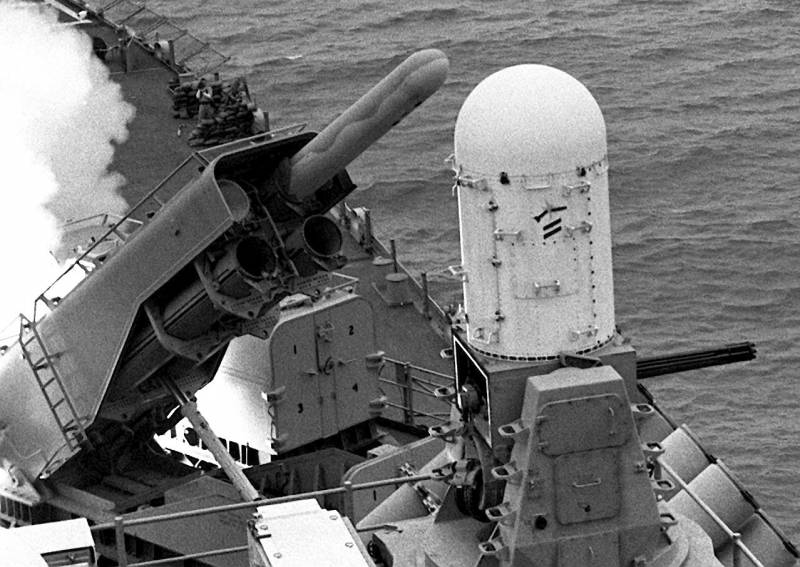
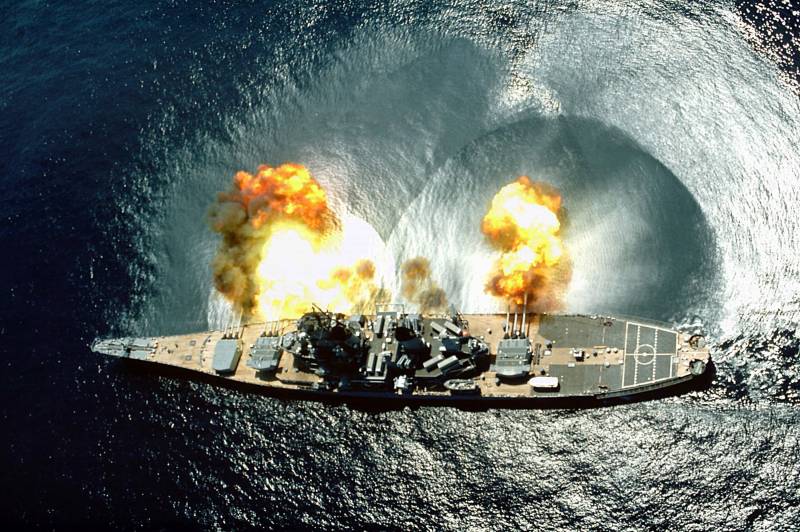
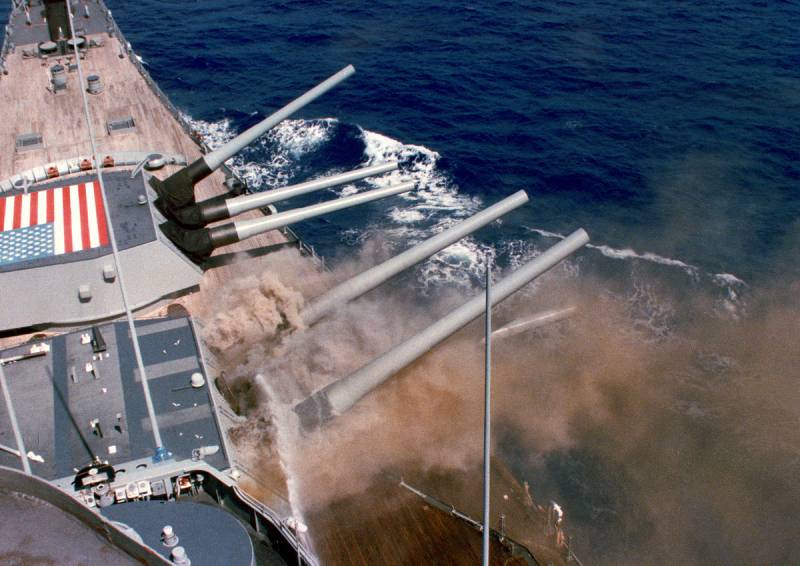
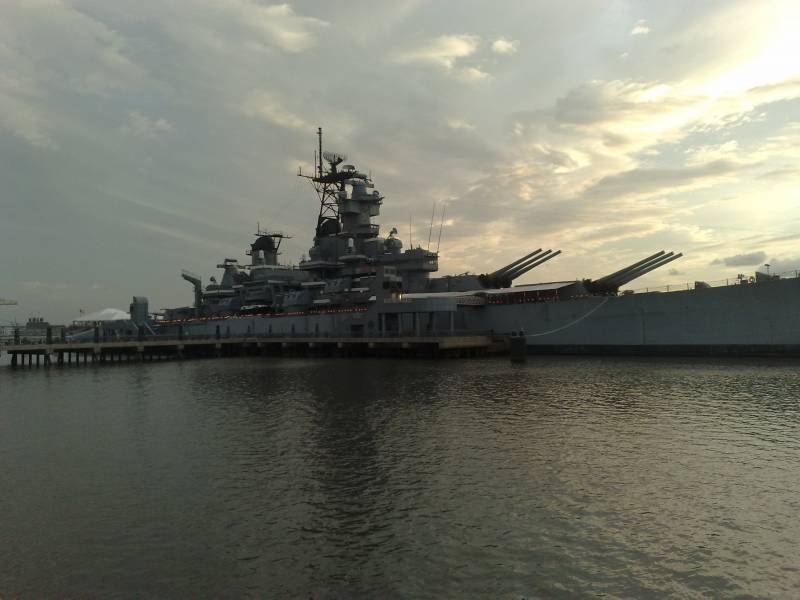
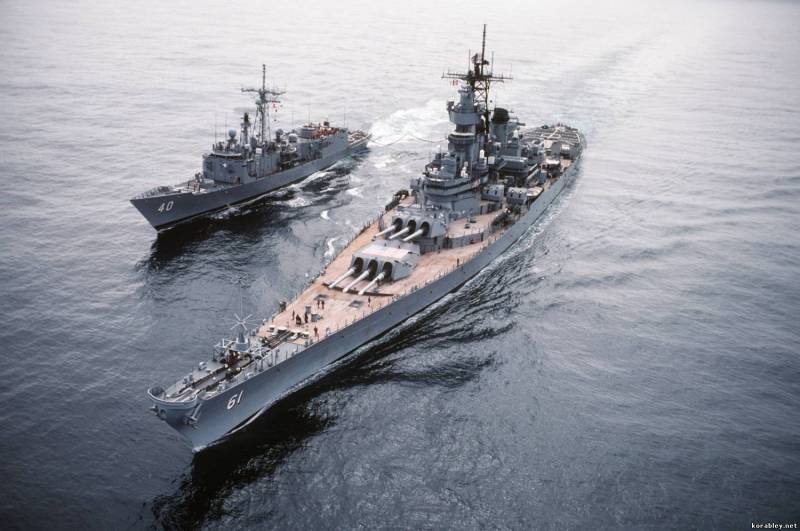
Information